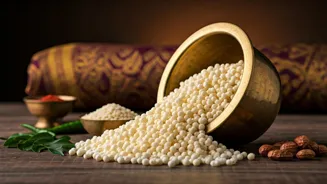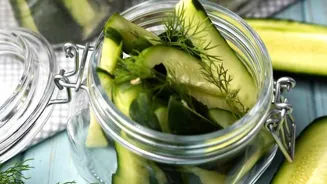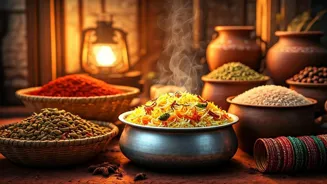What is Sabudana?
Sabudana, also known as sago, isn't a grain but a processed food derived from the starch extracted from tapioca roots. It's a common ingredient in various
Indian dishes, particularly during religious fasts like Navratri or Ekadashi. Its popularity stems from its easily digestible nature and versatility.
Making Sabudana: Process
The production involves extracting starch from tapioca roots, a process that includes washing, crushing, and pulping. The extracted starch is then dried and shaped into the familiar pearl-like form we recognize as sabudana. This process ensures the starchy goodness is preserved.
Sabudana vs. Sago?
While often used interchangeably, sabudana and sago are not exactly the same. Sabudana is made from tapioca, while sago is made from the pith of the sago palm. However, the processing and appearance are very similar, leading to their common association in Indian cuisine.
Sabudana: Healthy or Not?
Sabudana is primarily carbohydrates, providing energy, but lacks significant amounts of other nutrients like fiber. Nutritionists often advise mindful consumption. It is a good source of energy, but a balanced diet with diverse ingredients is crucial for overall well-being.
Sabudana in Cuisine
From the classic sabudana khichdi to creamy kheer, sabudana finds its way into many Indian dishes. Its ability to absorb flavors and its soft texture make it a versatile ingredient. Experiment with various recipes and enjoy this cultural staple!











